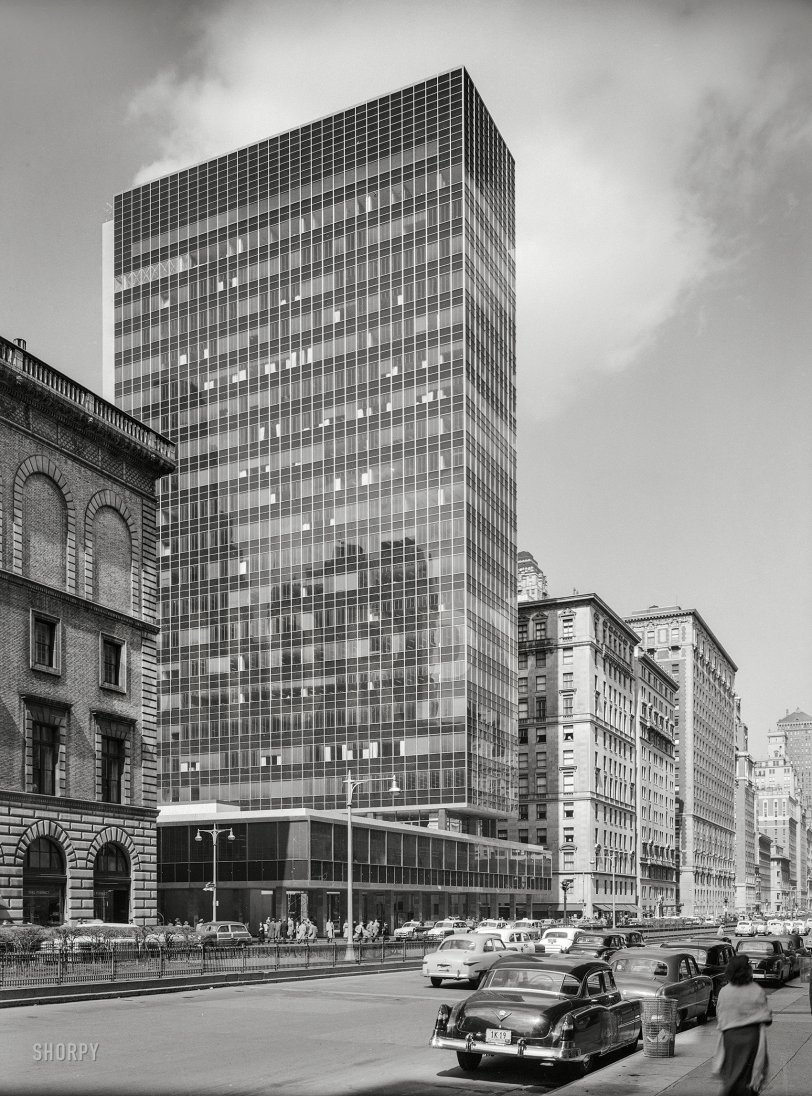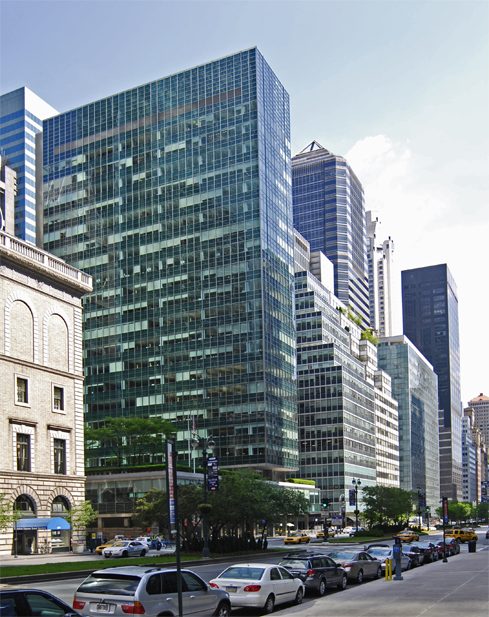


Framed or unframed, desk size to sofa size, printed by us in Arizona and Alabama since 2007. Explore now.
Shorpy is funded by you. Patreon contributors get an ad-free experience.
Learn more.

- Baldwin 62303
- Baldwin VO-1000
- Cold
- No expense spared
- Tough Guys
- Lost in Toyland
- And without gloves
- If I were a blindfolded time traveler
- Smoke Consumer Also Cooks
- Oh that stove!
- Possibly still there?
- What?!?
- $100 Reward
- Freeze Frame
- Texas Flyer wanted
- Just a Year Too Soon
- WWII -- Replacing men with women at the railroad crossing.
- Yes, Icing
- You kids drive me nuts!
- NOT An Easy Job
- I wonder
- Just add window boxes
- Icing Platform?
- Indiana Harbor Belt abides
- Freezing haze
- Corrections (for those who care)
- C&NW at Nelson
- Fallen Flags
- A dangerous job made worse
- Water Stop
Print Emporium
Lever House: 1952

March 25, 1952. "Lever House, 53rd Street and Park Avenue. Gordon Bunshaft, architect." 5x7 inch acetate negative by Gottscho-Schleisner. View full size.
DeSoto, you bet your life
The past DeSoto presence in taxi fleets is the result of one man: James F. Waters. Waters owned several DeSoto dealerships on the west coast and secured a Plymouth-DeSoto distributorship for northern California in 1929. He subsequently purchased a Manhattan based Plymouth-DeSoto distributorship in the early 1930s. By 1935 the Police Departments of the five boroughs of New York City mandated that taxi operators use purpose-built vehicles that allowed five adults to ride comfortably in the rear compartment. DeSoto at the time had a model called the Airstream, a seven passenger car that was easily modified to meet the purpose-built requirements of the local police. Chrysler, eager to get into the taxi market made a deal with Waters whereby he would convert stripped Airstreams into taxicabs at a Detroit facility, then sell them to cab companies through his dealerships. The rest is history. Over the years there were other players involved, as well as name and organizational changes made to the Waters enterprise. By 1956 it was all over. For a detailed account see Coachbuilt.com, Frank F. Waters.
DeSotos abound.
I was a 10 year old living in NYC in 1952. While driving around in my parents car, I always wondered why so many of the taxis were Chrysler products, DeSotos in particular as seen in this photo. I guess once a car guy, always a car guy.
Wall of Color
Time and Again - thanks for the color photo. Lever House is an astounding work of the International style, one that requires seeing its true green hues to fully appreciate.
Although Park Ave is now mostly one big anonymous glass wall, Lever House still stands out. Every time I walk past I admire what SO&M created. I was concerned when they removed and modernized the entire exterior glass curtain a number of years ago, but they did a fantastic job of maintaining the original appearance.
Great "lobby"
I walk past here daily and it has one of the most interesting ground floor displays time after time. Once it was simply piles & piles & more PILES of copy paper in varying heights. Simple, but still quite dramatic
Beginning of the end
So sad, you can see this as the beginning of the horrible glass box monstrosities that have taken over our cities. Especially hard when you see the bldg to the right has remained while all the others have become copies.
Bunshaft
We are so used to seeing curtain-wall skyscrapers now, but this building turns 65 next year -- imagine the sight of it there on Park Avenue, back then, as strange and thrilling as an alien landing craft. I understand there's a beauty in the severity of line and proportion, but I shall leave the praise of the International Style to others. In the meantime, check out the good old American lines on that gleaming Caddy front and centre, and the woodie across the street.
+56
Below is the same view from June of 2008.

























On Shorpy:
Today’s Top 5